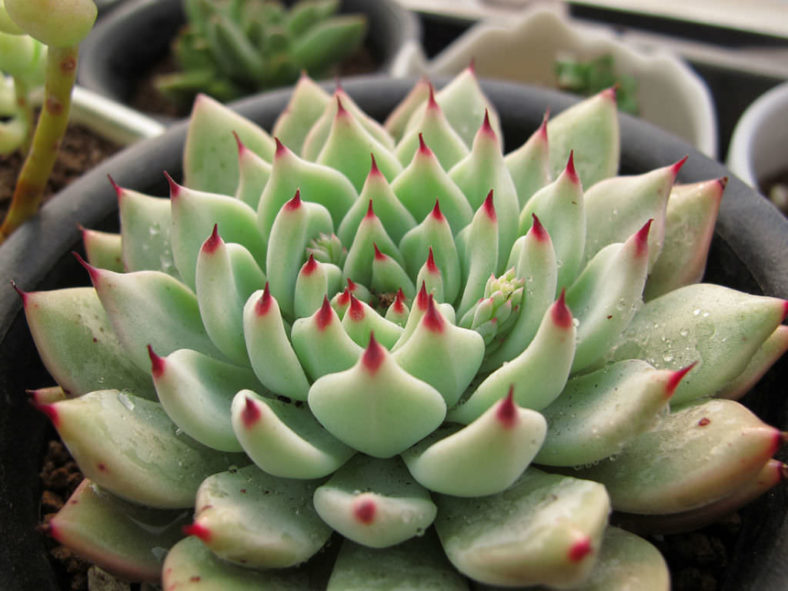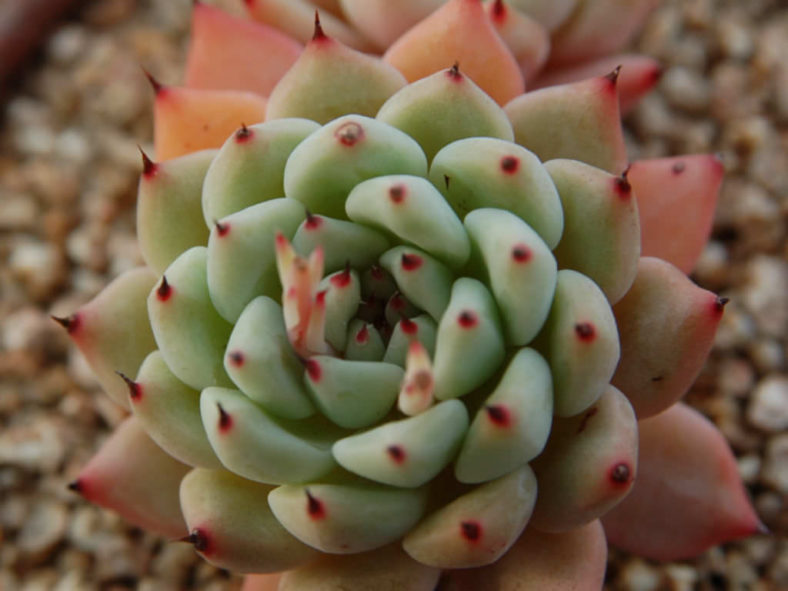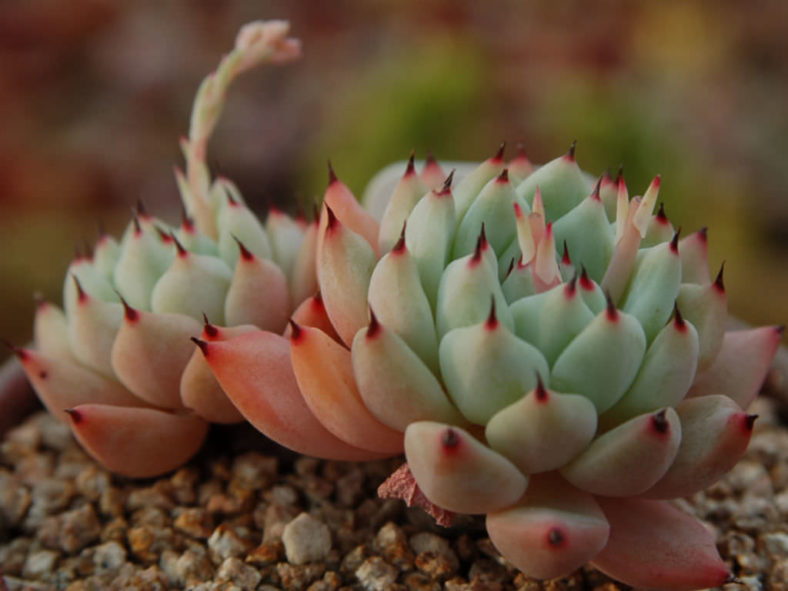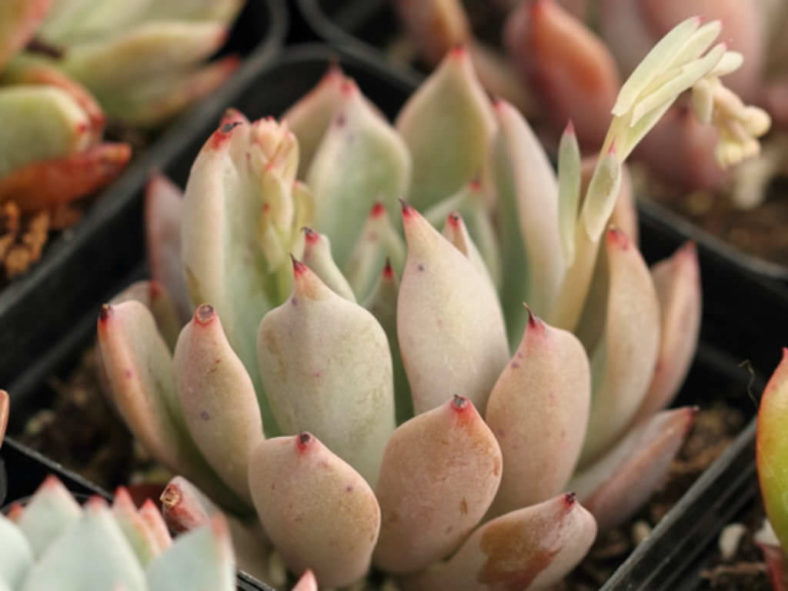Scientific Name
Echeveria cuspidata var. zaragozae Kimnach
Synonym(s)
Echeveria cuspidata var. gemmula
The type localities of Echeveria cuspidata var. gemmula and Echeveria cuspidata var. zaragozae are only 330 feet (100 m) apart, and the differences between these two varieties are insignificant. Therefore, Echeveria cuspidata var. gemmula was reduced to a synonym of Echeveria cuspidata var. zaragozae in Crassulacea No. 5 on September 29, 2017, by the International Crassulaceae Network. Additionally, the information that Echeveria cuspidata var. gemmula was found in Jalpan, Querétaro, is incorrect; the plant in question was actually collected near Zaragoza.
Scientific Classification
Family: Crassulaceae
Subfamily: Sempervivoideae
Tribe: Sedeae
Genus: Echeveria
Etymology
The varietal epithet "zaragozae" (pronounced "LOESH-ee-AY-nah") means "of Zaragoza" and refers to Zaragoza, a city in Nuevo León, Mexico, where this species originates.
Origin
Echeveria cuspidata var. zaragozae is native to Mexico. It occurs on gypsum hills near Zaragoza.
Description
Echeveria cuspidata var. zaragozae is a small succulent that forms a usually solitary rosette of bluish-green leaves, suffused with pinkish hues on the apical half. This variety has smaller, more oblanceolate leaves than Echeveria cuspidata var. cuspidata. The rosettes can reach a diameter of 4 inches (10 cm). The leaves are thick, fleshy, erect when young, slightly deflexed when old, with prominent purplish-red pointed ends, and can measure up to 2 inches (5 cm) long, and up to 0.6 inches (1.5 cm) wide. Older leaves are less bluish.
The long-lasting, urn-shaped flowers are pink on the outside and yellow on the inside, and they appear in clusters on 1 to 3 pinkish-orange stalks in spring.

Hybrids of Echeveria cuspidata var. zaragozae
How to Grow and Care for Echeveria cuspidata var. zaragozae
Hardiness: USDA hardiness zone 10a to 11b: from 30°F (-1.1°C) to 50°F (10°C).
Most common Echeveria species are not complicated succulents to grow, provided you follow a few basic rules. First, never let water sit in the rosette, as it can cause rot or fungal diseases that will kill the plant. Additionally, remove dead leaves from the bottom of the plant as it grows. These dead leaves provide a haven for pests, and Echeverias are susceptible to mealybugs. As with all succulents, careful watering habits and plenty of light will help ensure success.
Most Echeveria can be easily propagated from leaf cuttings, although a few are better propagated from seeds or stem cuttings. Place the individual leaf in a succulent or cacti mix to propagate a leaf cutting, and cover the pot until the new plant sprouts.
Repot as needed, preferably during the warm season. To repot a succulent, ensure the soil is dry before repotting, then gently remove the pot. Knock away the old soil from the roots, removing any rotted or dead roots. Treat any cuts with a fungicide.
See more at How to Grow and Care for Echeveria.
Links
- Back to genus Echeveria
- Succupedia: Browse succulents by Scientific Name, Common Name, Genus, Family, USDA Hardiness Zone, Origin, or cacti by Genus
Photo Gallery
Click on a photo to see a larger version.


